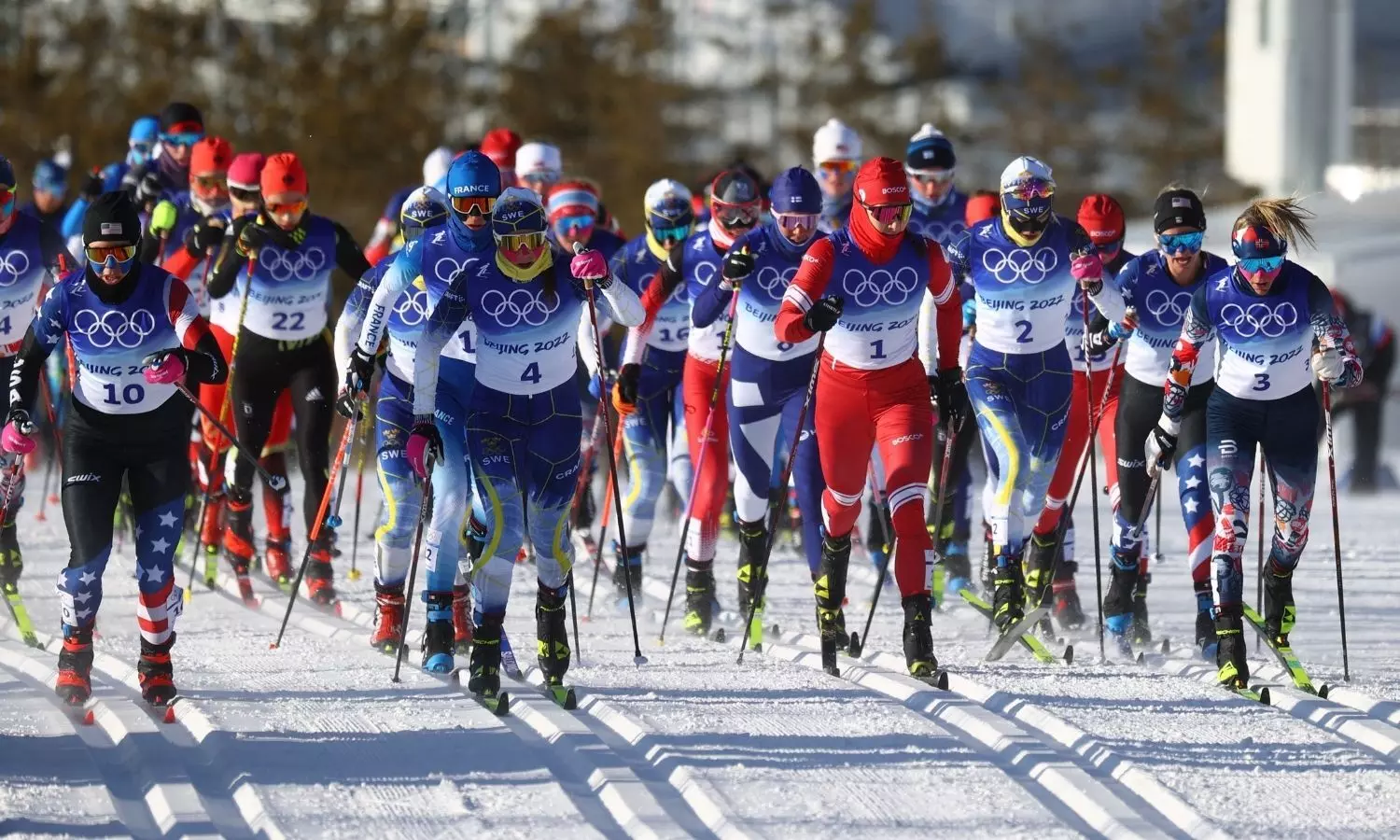Olympics
Beijing 2022 Winter Olympics: Cross-country skiing not quite the marathon
Cross-country skiing has been an integral part of the Winter Olympics since its debut in the inaugural Games in 1924

Cross-country skiing is one of the most captivating endurance events at the Olympics — so how do the athletes get back on the snow so quickly after a race? Cross-country skiing has been an integral part of the Winter Olympics since its debut in the inaugural Games in 1924. It has since expanded and evolved — the 2022 Beijing Winter Olympics will include 12 cross-country skiing events, 11 biathlon events (involving skiing and target shooting) and three events in Nordic combined (ski jumping and cross-country skiing).
Many of us will never experience cross-country skiing, but we've run over the same distance (events range from 5km to 50km). Much like marathon running, cross-country skiing is a demanding endurance sport, and because of the use of both leg and arm muscles, metabolic demand is greater for cross-country skiing than running. In cross-country skiing, competitors' heart rates reach over 80 percent of the maximal level throughout a race. However, while marathon runners can only complete a few events per year, cross-country skiers routinely manage several races over four months.
The key to this extraordinary rate of recovery lies in the muscle damage: cross-country skiing is a severe fatiguing sport, but leaves its competitors with very little muscle damage. Movement in sports is driven by skeletal muscle. When going down stairs, front thigh muscles work to stop the body moving forward by performing "eccentric muscle contractions". In eccentric muscle contraction, contracting muscles are lengthened by greater external load than muscle force in contrast to concentric muscle contraction, in which muscles are shortened. Eccentric exercise is easier to perform than concentric exercise as less oxygen is required for going downstairs than up. Muscle pain is felt after performing "unaccustomed" exercise that has never been performed previously or has not been performed for a long time.
Generally, this pain develops hours after exercising and exacerbates in the days after — known as delayed onset muscle soreness (DOMS). DOMS is induced only after exercise that consists of eccentric muscle contractions. Since eccentric exercise induces "muscle damage" characterised by a prolonged decrease in muscle function and increase in muscle specific proteins in the blood indicating plasma membrane damage, DOMS is considered as an indicator of muscle damage. However, "muscle damage" does not necessarily mean that many muscle fibres are injured or destroyed. Actually, the number of muscle fibres that become necrotic even after a high-intensity eccentric exercise is very small, especially for leg muscles (<1 percent of whole muscle fibres).
Interestingly, other structures such as connective tissue surrounding muscle fibres or fascia surrounding muscle fascicles appear to be more affected by eccentric contractions, which appears to be a cause of DOMS. Long-distance running, including the marathon (officially marked at 42.195 km), induces muscle damage indicated by ultrastructural alterations of muscle fibres, increased muscle proteins such as creatine kinase and myoglobin in the blood, decreased muscle function, and DOMS. Recovery from a marathon race takes several weeks at least, even for well-trained marathon runners. In contrast, elite cross-country skiers can take part in races separated by a relatively short time. Although the exercise time is similar for a 50-km cross-country ski race and a marathon (approximately two hours for elite athletes), the number of races the athletes participate in during a season is very different.
The difference between skiers and runners could be that cross-country skiers suffer less muscle damage in competition. Changes in blood markers of muscle damage are less following a cross-country ski race than a marathon race. In an examination of 11 moderately trained university student cross-country skiers, the maximal strength of knee extensors decreased 27 per cent immediately after the race — but returned to pre-exercise values within the following 24 hours. All blood markers increased following the race, peaking either immediately or 24 hours later, but the magnitude of the changes was not large. Muscle soreness developed in the leg, arm, shoulder, back, and abdomen muscles immediately after the race, but decreased after 24 hours, and disappeared by 48 hours post-race.
This suggests that the muscle damage induced by a 50km cross-country ski race was mild and recovery from the race did not take long. Ground reaction force in low-speed running is reportedly 1.5 times body mass during the heel strike phase. In contrast, ground reaction force in cross-country skiing is about 0.5 times body mass immediately after a ski touches the ground in the diagonal technique. It is likely that the higher the ground reaction force, the greater the eccentric load for the muscles to absorb the impact. When comparing the classic and skating styles, it seems the classic style is more friendly to muscles, thus inducing less damage.
The magnitude of eccentric load is less in cross-country skiing than running because of the smaller impact from the ground in cross-country skiing. Cross-country skiing remains a severely exhausting sport, and the achievements of the competitors in the Winter Olympics are captivating. It seems astounding that competitors can recover from a 50-km ski race as fast as they can — another testament to the incredible restorative power of the human body. Professor Ken Nosaka is currently the Lead of Exercise and Sports Science in the School of Medical and Health Sciences at Edith Cowan University (ECU). He worked in Japan for nearly 20 years before relocating to ECU in April 2004 as an Associate Professor, and became a full Professor in December 2009.
